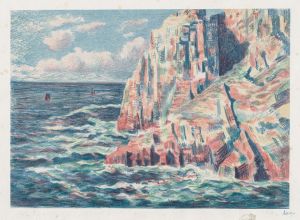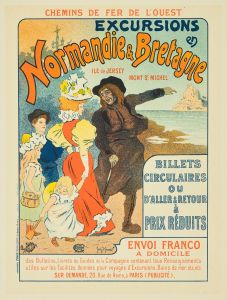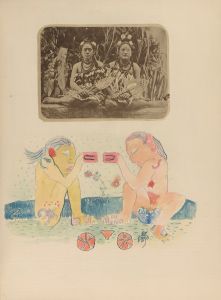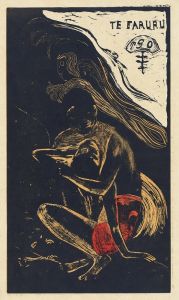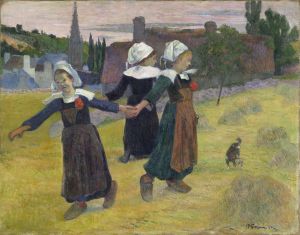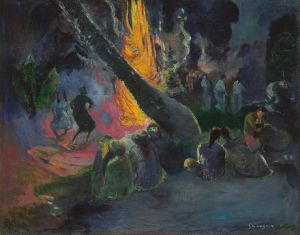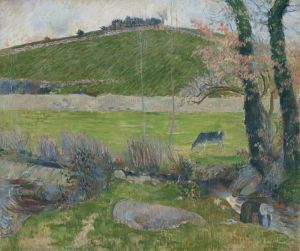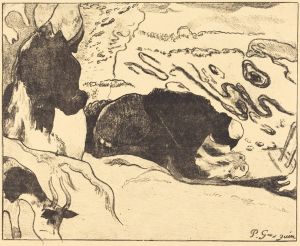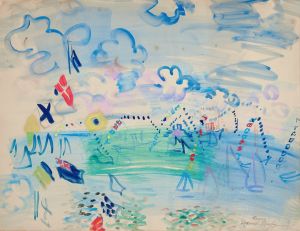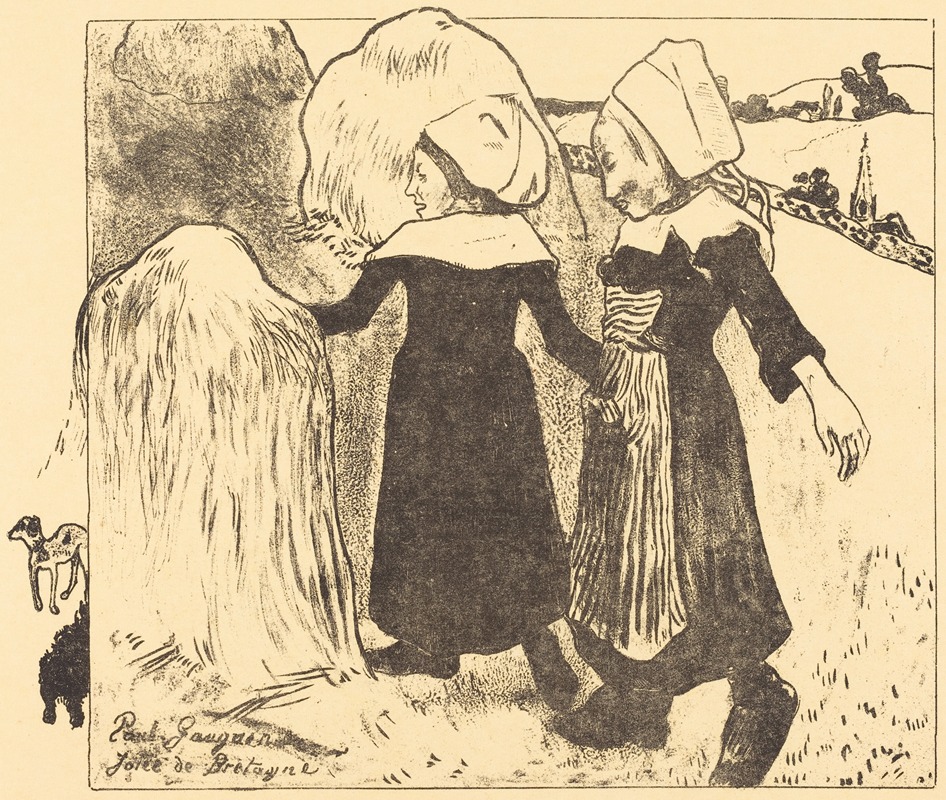
Pleasures of Brittany
A hand-painted replica of Paul Gauguin’s masterpiece Pleasures of Brittany, meticulously crafted by professional artists to capture the true essence of the original. Each piece is created with museum-quality canvas and rare mineral pigments, carefully painted by experienced artists with delicate brushstrokes and rich, layered colors to perfectly recreate the texture of the original artwork. Unlike machine-printed reproductions, this hand-painted version brings the painting to life, infused with the artist’s emotions and skill in every stroke. Whether for personal collection or home decoration, it instantly elevates the artistic atmosphere of any space.
"Pleasures of Brittany" is a painting by the French Post-Impressionist artist Paul Gauguin, created in 1889. Gauguin is renowned for his bold use of color and synthetist style that played a significant role in the Symbolist movement. This particular work is part of his exploration of life in Brittany, a region in northwestern France that he visited several times during the late 19th century.
The painting reflects Gauguin's interest in the rural and traditional aspects of Brittany, which he found to be a stark contrast to the modernity of Paris. During his time in Brittany, Gauguin was part of the Pont-Aven School, a group of artists who were drawn to the area's picturesque landscapes and unique cultural heritage. The region's distinct customs, costumes, and way of life provided rich material for Gauguin's artistic exploration.
"Pleasures of Brittany" captures the essence of Breton life through its depiction of local people and their activities. Gauguin's use of vibrant colors and bold outlines is characteristic of his style during this period. The painting is notable for its departure from the realism that dominated much of 19th-century art, instead opting for a more abstract and symbolic representation. This approach allowed Gauguin to convey not just the visual aspects of Brittany but also its spiritual and cultural essence.
The painting is also significant for its reflection of Gauguin's broader artistic philosophy. He sought to move beyond the limitations of Impressionism, which he felt was too focused on the fleeting effects of light and color. Instead, Gauguin aimed to express deeper emotional and symbolic meanings through his work. "Pleasures of Brittany" exemplifies this shift, as it combines elements of reality with imaginative and symbolic interpretations.
Gauguin's time in Brittany was a formative period in his career. It was here that he began to develop the style that would later define his work in Tahiti, where he sought to escape European civilization and find a purer form of artistic expression. The experiences and artistic developments that took place during his stays in Brittany were crucial in shaping his later works.
"Pleasures of Brittany" is housed in the Musée d'Orsay in Paris, which holds an extensive collection of works from the Impressionist and Post-Impressionist periods. The painting remains an important example of Gauguin's early exploration of themes and styles that would continue to evolve throughout his career.
In summary, "Pleasures of Brittany" is a testament to Paul Gauguin's innovative approach to art, his fascination with the cultural richness of Brittany, and his desire to transcend traditional artistic boundaries. Through this work, Gauguin not only captured the visual beauty of the region but also delved into its deeper cultural and spiritual dimensions, marking a significant step in his artistic journey.








